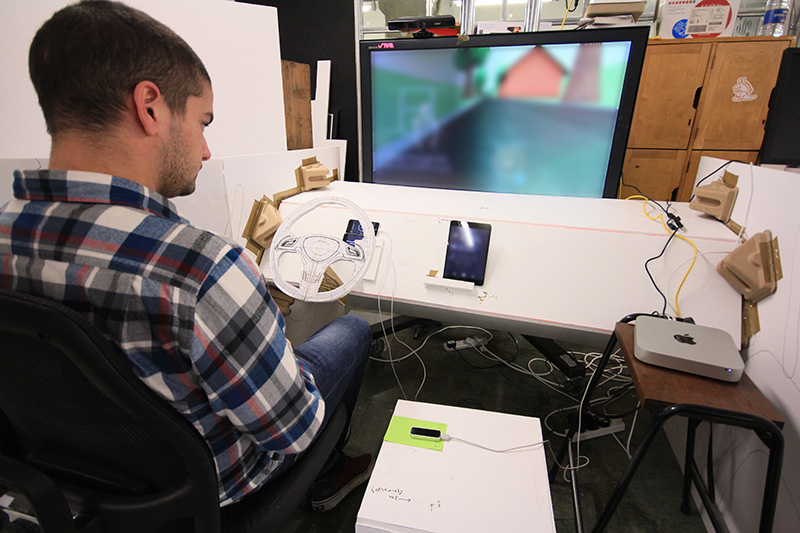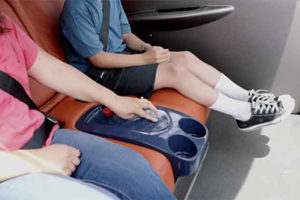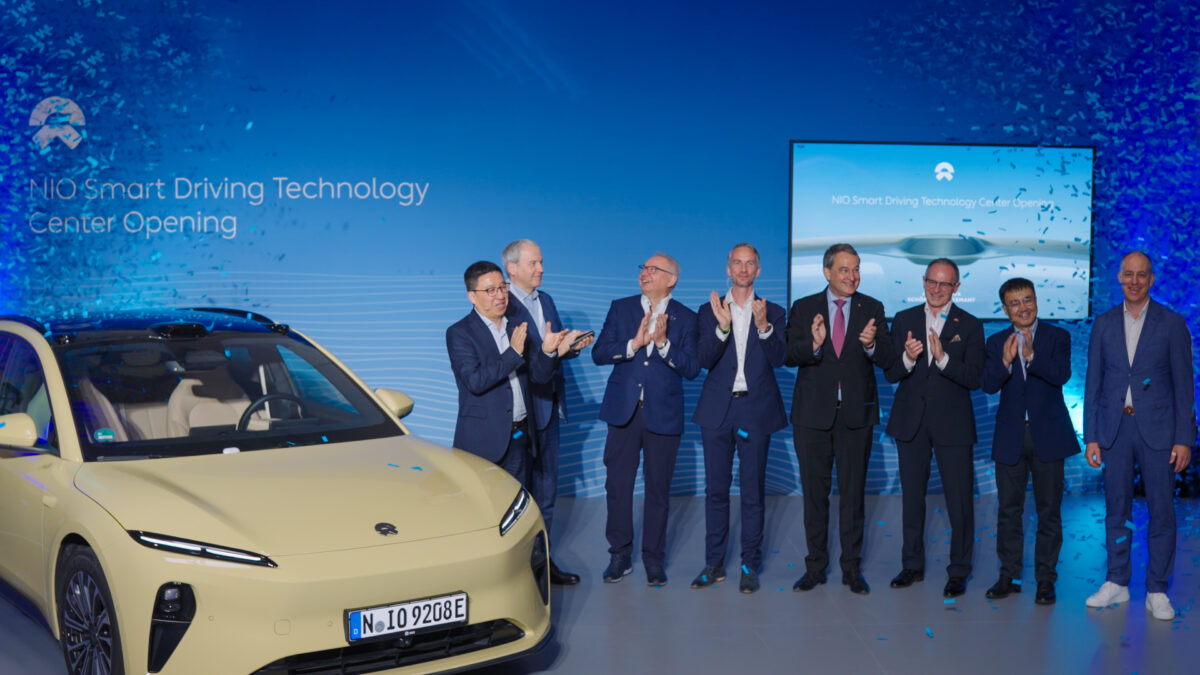A digital design studio with a strong track record in game design was recently commissioned by a global vehicle manufacturer to create an automotive human machine interface (HMI) concept. That studio was ustwo, a 200-strong outfit with offices in London, Malmö and New York. Crucially, it was not chosen for its expertise in the automotive industry, but for the very opposite – it was brought in for its lack of experience, and its ability to bring to the arena a fresh pair of eyes.
But what attracted ustwo to the automotive sphere? “We see a gap appearing in the quality of user experience, and we’re really well placed to take that on,” says David Mingay, Creative Director at ustwo. Mingay says ustwo’s long experience of working with mobile technology has given it the experience it needs to address the massive growth in touchscreen technology, smartphones and tablets. “That has really played to our strengths, and we’ve been involved in a number of small and large-scale projects and games across a multitude of industry verticals.”
For now, ustwo’s OEM client remains anonymous. “Obviously, I can’t say who they are,” says Mingay. “It’s a global company – that’s probably as much as we can say. It’s a name everyone would know. We’d love to shout from the rooftops about it because we’ve got some really simple but yet really effective ideas. We can’t give specific examples from the client work, but essentially it’s about taking emergent technologies and doing experiments with real users in mocked up cabins, and functioning prototypes. Unfortunately, I can’t say exactly what those things are.”

That well-known global OEM asked ustwo to investigate the driver-car interaction experience of the near future from a human-centric point of view. “People’s attitudes to digital, to car buying and to car sharing are changing. It’s time to wake up and look at the new horizons,” believes Mingay. “It’s not just a case of sticking a touchscreen on it any more. People’s engagement with digital devices and mobile devices are so profound now that they’re almost overtaking the importance of car ownership.
“And this is happening with the car industry now. Emerging car buyers, aged 17, used to save up their money, spend it on a car and keep it going. Now they’re spending that money on a smartphone and using public transport. So there’s a whole multitude of reasons why we think automotive is changing.”
“We’re problem solvers, especially when it comes to user experience and visual design,” says Tim Smith, a designer at ustwo. “We feel those two things are currently misrepresented in the car, and we feel we’re best placed to tackle that specific problem within automotive. It’s not like we’re coming along and designing our own car. We can’t do that. But we are addressing what we are experts in, within a car.”
Ustwo is used to tackling new territories, explains Mingay. “Yes, we do gaming, but we also do consumer and investment banking, and mission-critical dashboards. We’re not scared to get into really cutting-edge, challenging industry verticals, and that includes automotive.”

When pursued on the type of in-car work that ustwo has undertaken, Harsha Vardhan, Interaction Designer, reveals a focus on gesture control. “We’ve looked into gestural interactions, and the possibilities and application of gestures to control certain aspects of the car. We found controlling every aspect of the HMI quite demanding for the user during testing, so we pared it down to parts where it makes the most sense. There has to be a separation between discrete and continuous gestures.” After all, if you’re waving to a friend, you don’t want the wipers to come on.
We expect the world in 2025 to look very different from now. Compare life today to 11 years ago; in many ways it was very different, but in others, things still look very familiar. How different does a future-looking company like ustwo think things will be in 2025 compared to the difference between 11 years ago and now?
Long automotive processing cycles prohibit such innovation, responds Smith. “It would be disappointing but not unlikely that in 11 years we are only one or two years ahead. We’ve lost traction. Companies like Google, Apple and Microsoft are offering shortcuts to plug a tablet or a smartphone into to the car for a user-friendly HMI. We don’t think that’s a very meaningful model, but that could be where it’s going. HMI has fallen by the wayside in favour of plug-and-play solutions.”
The danger of handing over the HMI to a third party is that the key point of interaction between consumer and car brand is lost. Are vehicle manufacturers keen to see somebody coming in with fresh ideas, rather than letting them do what they think they can do best?
“We are still getting the initial reactions,” says Mingay. “We hope automotive manufacturers take a look and find it interesting. We’re certainly not saying we know best. It’s about making things easier, simpler, safer and more in tune with the brand. I think that will excite manufacturers. We think there’s a big gap between how designers think users will interact with them versus how users really do interact with them. And that’s part of our push.”
 There seems to be a very real possibility that within a number of years, not all cars will be manufactured by traditional car companies. Google designed a self-driving car and had it assembled outside of the automotive mainstream; that car has no steering wheel or pedals, and only a start-stop button for human input. When ustwo considers automotive HMI for the near-future, is this for a traditional car with a steering wheel, accelerator and clutch, or an all-new concept?
There seems to be a very real possibility that within a number of years, not all cars will be manufactured by traditional car companies. Google designed a self-driving car and had it assembled outside of the automotive mainstream; that car has no steering wheel or pedals, and only a start-stop button for human input. When ustwo considers automotive HMI for the near-future, is this for a traditional car with a steering wheel, accelerator and clutch, or an all-new concept?
“We’re not looking at driverless cars, yet,” grins Mingay. “But there are some other separate projects that we want to start looking at. What happens when you don’t need to drive? Why is the seat facing forward – why can’t you face each other? Suddenly it is a blank canvas. Many manufacturers need to react and pre-empt the way that companies like Google and Tesla are shaking things up. We want to work with manufacturers and help bridge that gap. Nobody ever asks whether something is right for the user, fits the user’s needs and is something they’re going to want to do when they’re driving. We very much come from a user-centric design methodology. We ask those questions. We want to understand what the users want.”
What message, then, would ustwo have for the automotive industry? “Come and talk to us and let us spend time with you so we can prove something very quickly in a matter of weeks,” concludes Mingay. “Then we can decide whether to take things forward. We know we can turn things around very quickly with a small, strong team and get results straight away. We’re not talking about six month engagement pieces with a video at the end of it – we’re talking about tangible results and tangible outcomes in a short time. Let us build and experiment with some ideas, get some users in, test it, and create something amazing. And then let’s see how that can progress in a matter of weeks, rather than months or years.”



